Elephant ear plant care: top growing tips for these statement houseplants
Our elephant ear plant care advice will keep your indoor display looking beautiful


You'll need some top tips on elephant ear plant care if you've chosen to add one to your indoor scheme. Luckily, we're here to help.
The name refers to many plants in the alocasia family, but all can be characterized by their huge, heart-shaped leaves atop slender stems. Some offer patterned foliage, some crinkled, some plain. But, all will bring instant drama to a shelf, table, or corner, making them undoubtedly one of the best indoor plants around.
'Big leaves that make a big statement – the popular alocasia is a family of tropical plants, native to the rainforests of southeast Asia,' explains Jo Lambell, plant expert and founder at Beards & Daisies. And, not only are they a visual treat thanks to their beautiful foliage, but they are also great air purifiers, she adds.
'In the wild, they can grow as tall as four meters, but don't worry, they won't reach such heights within your home,' Jo says. We share all the tips you need on indoor elephant ear plant care below.

3 top tips for elephant ear plant care
Elephant ear plants make a wonderful addition to indoor garden ideas. These quick tips will help you keep yours looking its best.
1. Provide bright but indirect light
'Elephant ear plants will appreciate lots of bright, indirect light,' says Jo. So, make sure you home them somewhere to suit.
'You can also wipe down its leaves every now and then to remove dust,' she says – this will help it get the light it needs to thrive. And, it's a good idea to keep rotating the plant to ensure it grows symmetrically.
Be careful not to put these plants in direct sunlight: too much sun can discolor the foliage.
Prayer plants enjoy similar conditions – you can learn more about prayer plant care in our dedicated guide.

2. Up the humidity
Due to their natural, tropical habitat, elephant ear plants love humid conditions.
Mist them regularly and keep them away from central heaters or air conditioners. You can also group multiple plants in pots together to retain humidity, or position your plants on a pebble tray.
'Consider placing in your bathroom – as long as it has a window,' suggests Jo. It will enjoy the steam generated by the shower. Pair alongside other best plants for bathrooms for a truly jungle-like vibe.
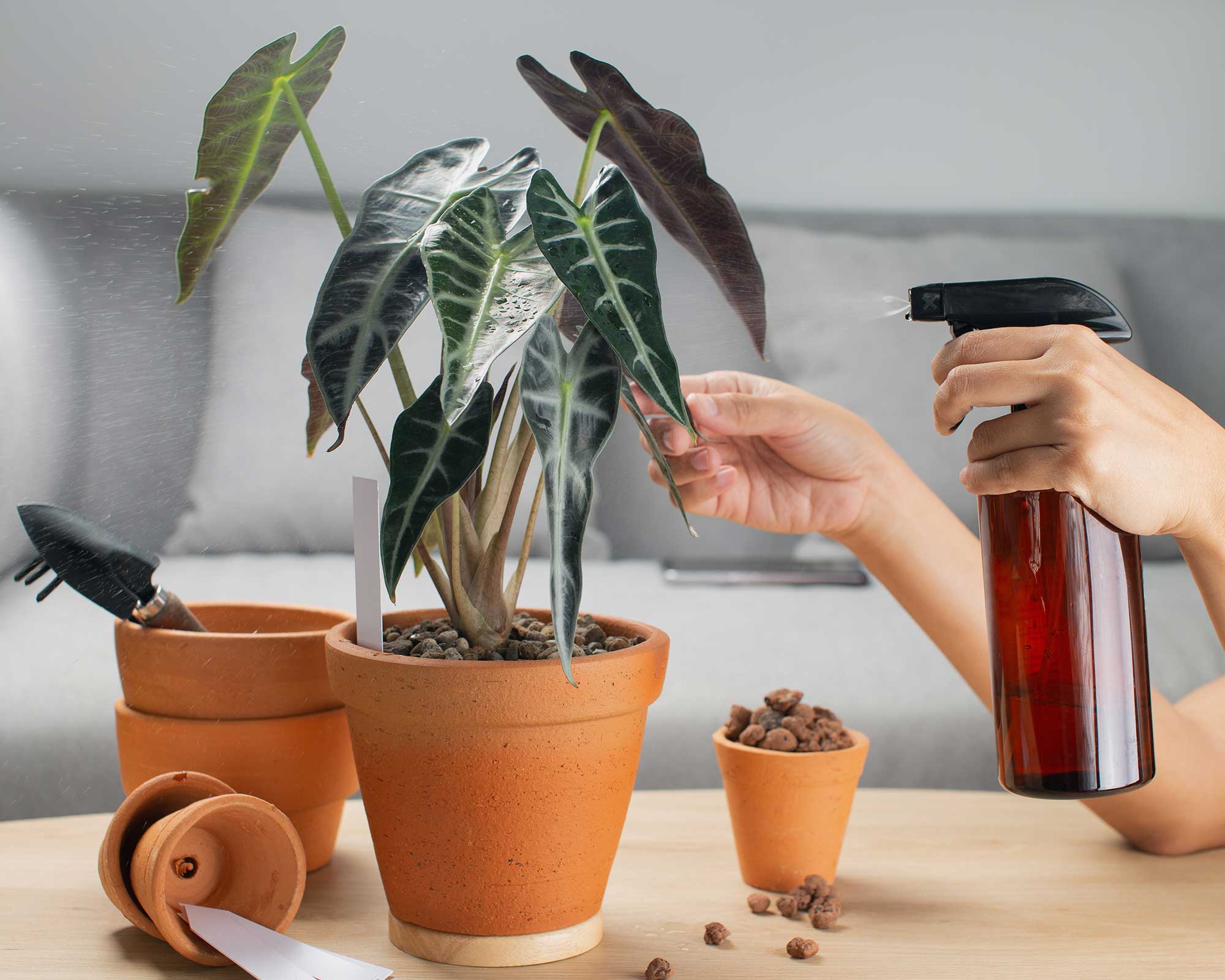
3. Adjust the temperature to suit
Just like with Swiss cheese plant care, providing the optimum temperature is important if you want these beauties to flourish.
Cold temperatures can cause an elephant ear plant to die, so keep it out of the way of any drafts, as says Jo. This may mean avoiding placing them on windowsills in winter, especially those with curtains where cold air can become trapped.
She explains how its ideal temperature is 65-72°F (18-22°C), so you may need to adjust your heating accordingly for the best results.
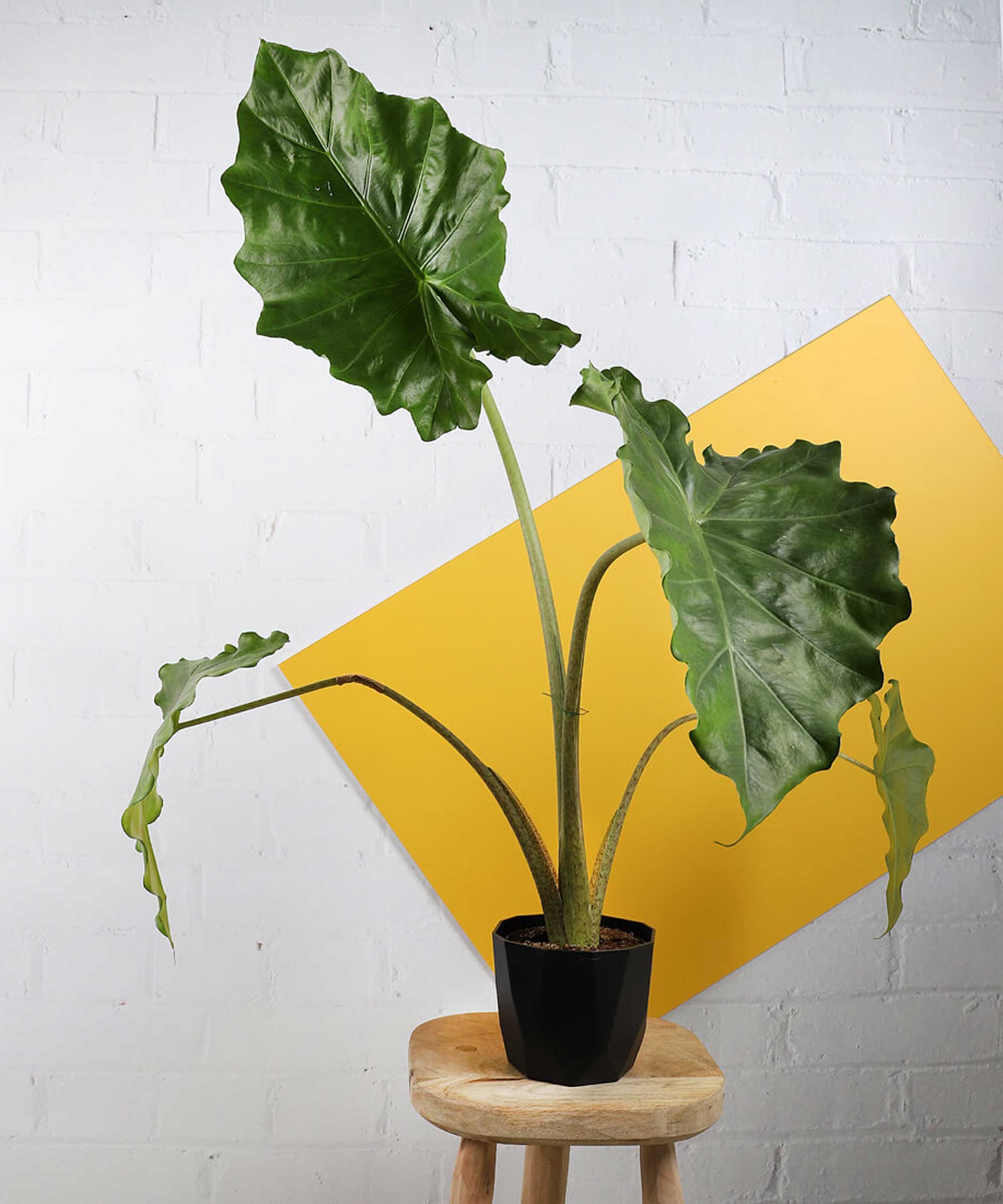
How much should you water elephant ear plants?
'The elephant ear likes its soil to be kept moist, but not soggy,' says Jo. 'Aim to water once a week, or whenever its soil starts to dry out.' A good way to check is by pushing your finger into the soil by an inch or so – if it feels dry, it's time to give it a drink. Ensuring proper drainage is also crucial and will reduce the risk of root rot.
A good sign to tell if you're overwatering the plant is if it begins to 'sweat out' the excess moisture.
'During cooler months, alocasia plants are known to hibernate, reducing the amount of energy they are expending,' adds Jo. They won't need as much water at this point.
Looking for more tips for popular houseplants? Our guide to air plants care is full of practical advice.
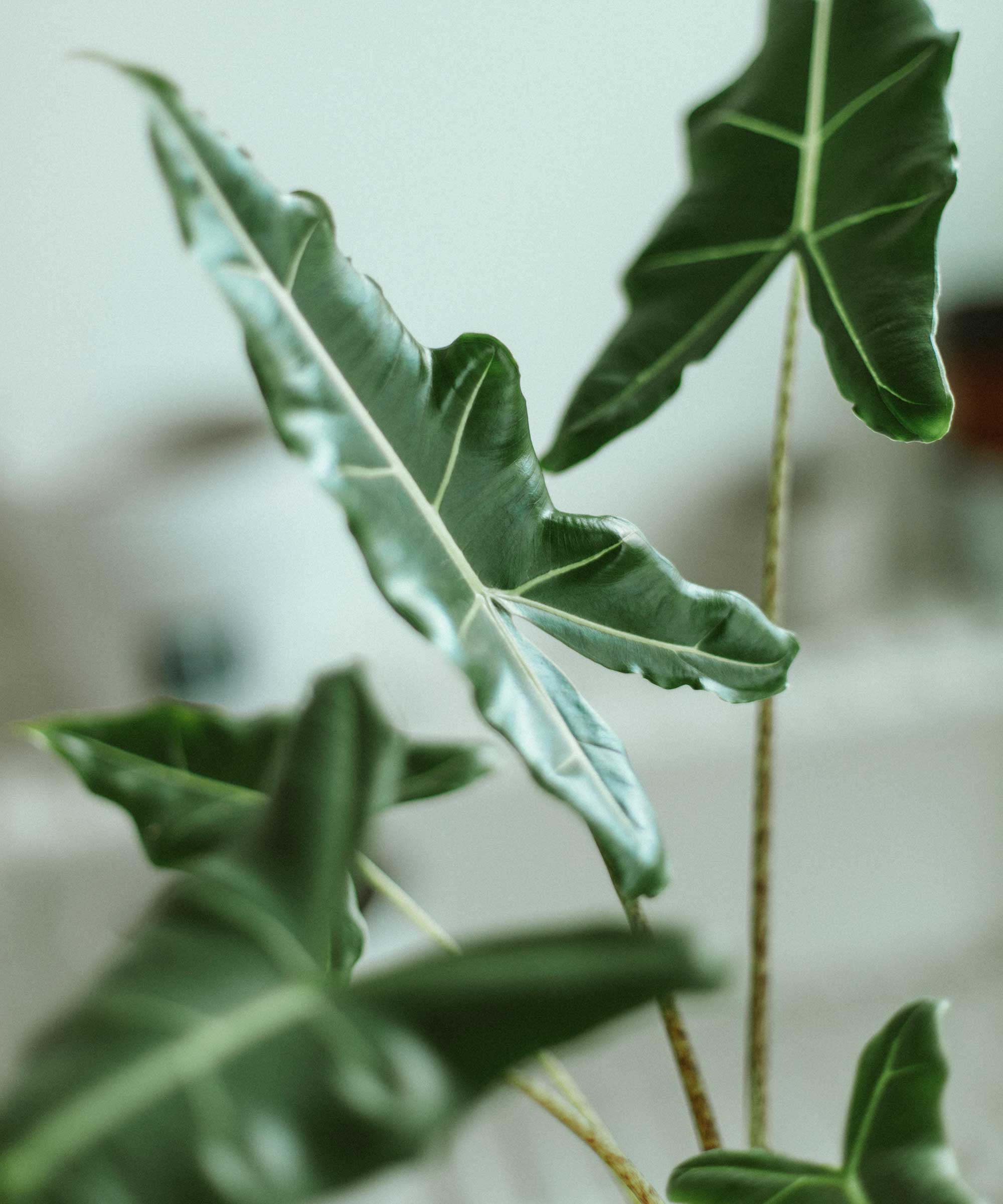
How do you re-pot elephant ear plants?
As your elephant ear plant grows over time, it will inevitably need to be transferred to a larger pot.
'Choose a stable and strong pot with ample room to support the elephant ear's growth – aim for around 1-2in (3-5cm) larger than your plant's current,' Jo says.
'This plant can grow at a rapid rate, so it may need to be repotted annually. However, it's worth noting that these plants like to be slightly under-potted for best foliage.
'The best time to repot your plant is in spring, as this marks the beginning of the growing season (April to Sep) when your plant will be thriving and flourishing.'
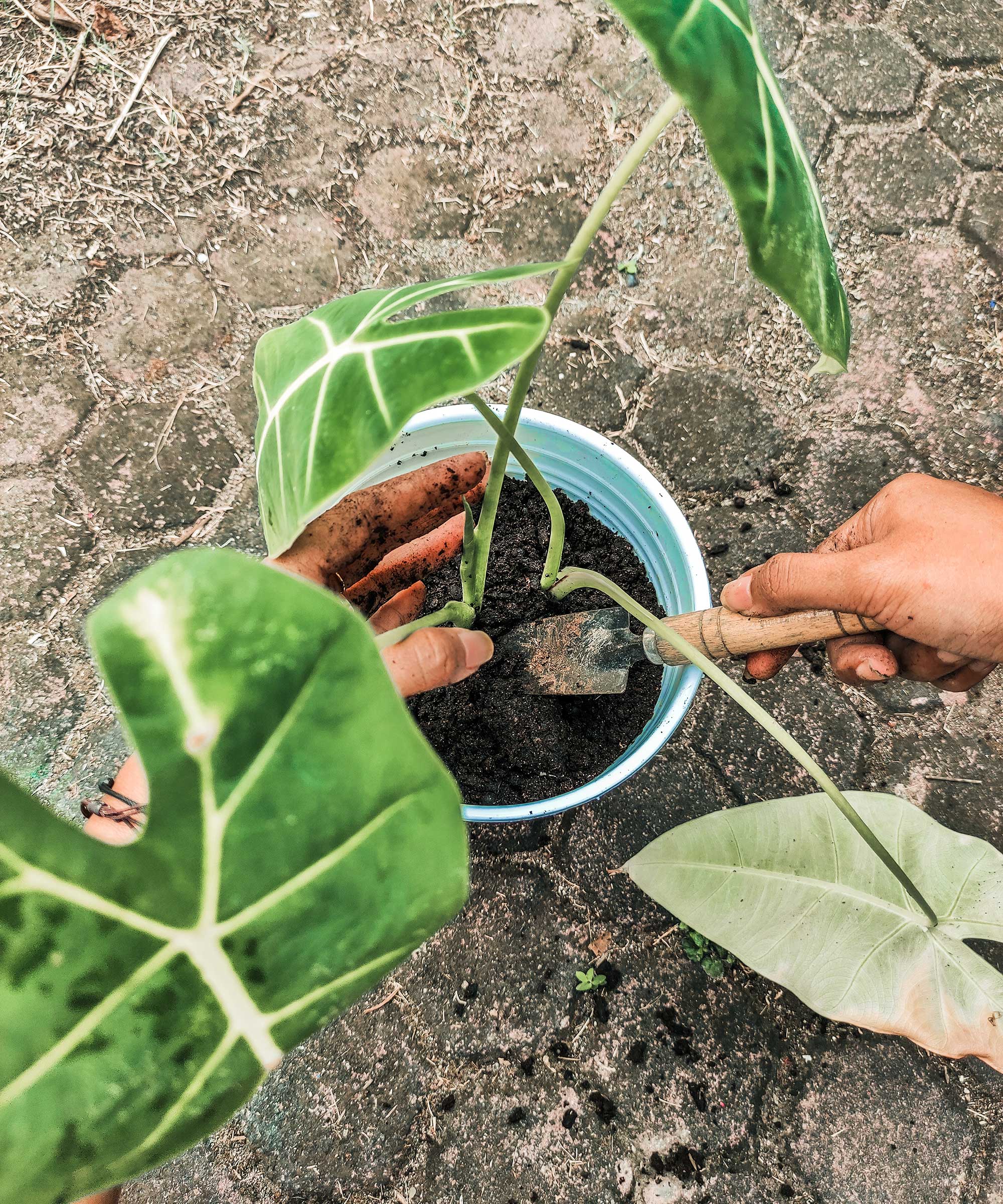
Should you fertilize elephant ear plants?
Fertilize your elephant ear plant with a nitrogen-rich feed every fortnight or so during the warmer months. This will encourage healthy leaf growth.
There is no need to fertilize during the cooler months, as the plant will be in its dormancy phase.

Do elephant ear plants drop their leaves in winter?
You may notice your elephant ear plant dying back when winter rolls around. Don't panic – this is quite normal.
Grab your best secateurs and give it a tidy by pruning away any dead leaves. New growth should appear in spring.
Can you grow elephant ear plants outdoors?
Plants in the colocasia family are also referred to as elephant ears. These are very similar to alocasia plants but are more commonly grown outdoors due to their larger size.
Whether you're growing colocasia or alocasia outdoors, plant the tubers in rich, well-drained soil and full to partial sun, and water frequently in dry weather. Colocasia tends to prefer wetter soils than alocasia, and a sunnier position.
Try adding them to a large container to liven up your patio gardening ideas. They won't survive freezing temperatures, so if you live in a colder climate, bring them indoors or into a heated greenhouse to protect them over winter.
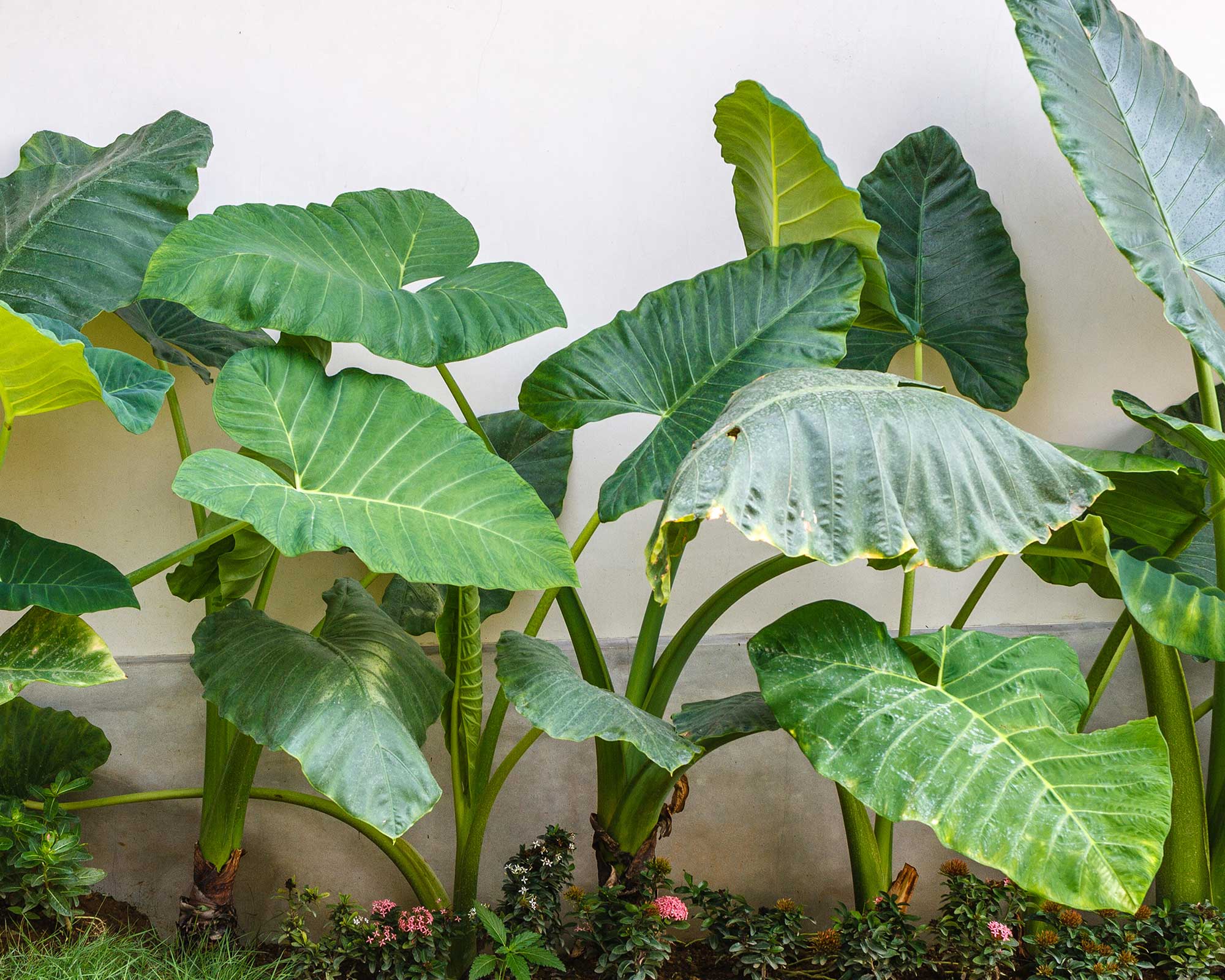
How do you propagate elephant ear plants?
Many houseplants, such as aloe veras, can easily be propagated to create new ones. And this goes for elephant ear plants, too.
Don't try to propagate elephant ear plants by taking cuttings. Instead, you can create new plants by splitting the tuber in spring or early summer.
All you need to do is carefully lift it from the soil and gently divide it up, removing the smaller tubers ('pups') with a sharp, clean knife. Each pup can then be replanted into different containers.
Where to buy elephant ear plants
Now you know how to take care of elephant ear plants, you may well want one of your own. Although many home stores and garden centers sell these popular plants, buying them online is often more convenient.
Our quicklinks below will help you start your search.
Shop elephant ear plants in the US:
- Shop elephant ear plants at Amazon
- Shop elephant ear plants at Target
- Shop elephant ear plants at Walmart
Shop elephant ear plants in the UK:

The garden was always a big part of Holly's life growing up, as was the surrounding New Forest where she lived. Her appreciation for the great outdoors has only grown since then. She's been an allotment keeper, a professional gardener, and a botanical illustrator – plants are her passion.
